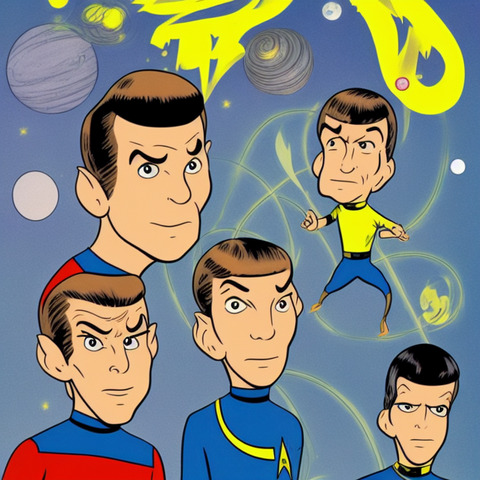Could AI art generators involve copyright violation?

Oh, the cases you'll know!
Everybody loves using AI-art (Midjourney, Dall-E, Stable Diffusion) software to make scenes "in the style of" a well known artist. But I predict an interesting court case when the artist is still in copyright. The neural network is trained on the copyrighted works, and the resulting work arguably derived from them. But wait, you say, surely it's a fair use? Not so fast. The recent appeals court ruling in Dr. Seuss vs. ComixMix, Gerrold and Templeton, where my brother did mash-up drawings of Star Trek figures in the style of Dr. Seuss to do a parody, had the court rule that using the style and patterns of a copyrighted artist might not be a fair use. He did win that it was a fair use in the district court but this got reversed by the court of appeals, and the Supreme court declined to consider it, leaving the reversal in place.
Ty does excellent work in his own original style, but he also is a master at working with the styles of others, which has won him much work drawing things like Batman, Superman, Spider-Man, the Simpsons and many other adaptations of TV-Shows.
Now, there are differences and particular factors in his case. The court surprisingly ruled that he didn't meet any of the fair use tests, and were bothered that he used more than the style, but placed Star Trek characters in well known Dr. Seuss scenes -- with his own original drawings, of course. While most would have felt this was amusing, and thus a parody, the court didn't agree, and ruled he was just exploiting the Seuss drawings and style, not adding parody to them.
However, most AI "in the style" works also could fail that test, they are not providing any commentary on the base artist. They don't always directly reframe specific scenes, the thing the court was particularly bothered by, but sometimes they do. They seem transformative, but so was "Oh the places you'll boldly go." Most are not commercial, but some will be and use of these AI engines is going to be done for a fee. (The court accepted Big Seuss' argument that people might buy "On the places you'll boldly go" as a gift to graduates, which is one of their main markets. The court also accepted their argument that they deserve to get money from works based on their intellectual property.)
So not all these factors may apply. But it's not entirely clear that they could not.
It's also unclear who might be liable. The AI Artist team has trained their neural network on vast collections of images, including the copyrighted images of the source artist. This might be deemed a derivative work of the source art. On it's own, it's clearly transformative and should meet several fair use tests, but that might not be true if it's used in a way which can affect the commercial value of the copyrighted works. It might mean the user, who creates a prompt to create the art -- who is probably the human creator of the final work for the purposes of copyright law -- might be creating a derivative work which would need to meet fair use tests.
If there is legal jeopardy here, the builders of AI Artist tools may decide to remove copyrighted works from their training sets. That's a challenge as today they just try to train on as many images as they can, and would be quite limited if restricted to public domain images. Most creative commons images require attribution for re-use and thus technically might not qualify, though going forward, I bet most people who released images under these licences would waive such rights.








Comments
Benjamin Liang
Mon, 2022-09-19 14:11
Permalink
Transformative Use
Wait, why did the courts look at the training sets (did they?)? How can that invalidate claims of transformative use.
I get that, yeah, if you use Dr. Seuss or Star Trek jpgs in the training set then it feels like ctrl-v. But also, the human brain has a training set from its eyes too! Maybe we are being biased against the AI computer, since, in the court discovery stage, you can look inside an SSD Hard drive but can't subpoena a person's mind...
If the legal test is, "look at resultant image (y-vector), then decide fair use", that's a good system because it's unbiased. If it's like, "look at code (x-vector), see (y-vector), use x&y to determine fair use" that doesn't make sense as there is no analog for humans which is the precedent. Also setting up the neural net (not dataset) is a human art too. Who knows, I'm just a kid not a legal expert. -Ben
brad
Tue, 2022-09-20 08:47
Permalink
Human vs. machine
The point about my brother's case is that it said that a human studying the style of Dr. Seuss and then making use of it could be a derivative work. Though the use of some iconic scenes also played a role, the court seemed bothered by the use of the style too. Once they say it is a derivative work, the question of "is this use a fair use?" gets applied.
If you use an AI art generator and they view that as a derivative work, then you would have to pass the fair use test.
Add new comment